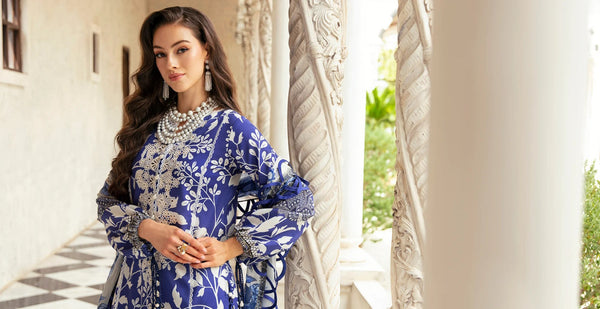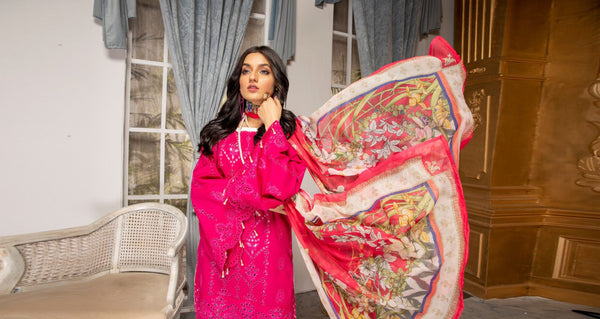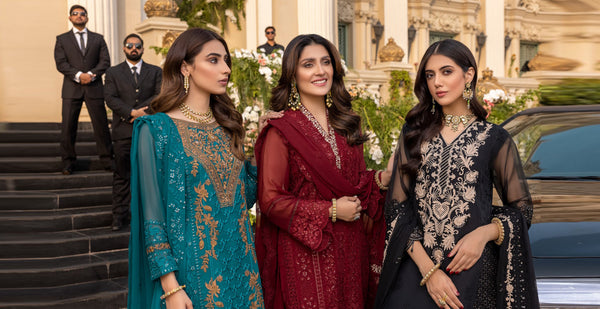Everything You Need to Know About the Iconic Lehenga Choli Outfits – History, Styles & Trends in India and Pakistan
The Lehenga Choli is one of the most celebrated traditional outfits in South Asian fashion. Popular in both India and Pakistan, it is worn for weddings, festivals, and formal celebrations. Combining artistry, cultural heritage, and elegance, the Lehenga Choli has evolved through centuries, yet remains a timeless wardrobe essential. This guide provides a comprehensive overview of its history, styles, fabrics, regional variations, modern adaptations, and styling tips.

A traditional Indian-Pakistani lehenga choli featuring exquisite embroidery and vibrant colors.
Table of Contents
- 1. History and Evolution
- 2. Types of Lehenga Choli
- 3. Fabrics and Embroidery
- 4. Regional Variations in India and Pakistan
- 5. Styling the Lehenga Choli
- 6. Modern Trends
- 7. Buying and Care Guide
- 8. Frequently Asked Questions (FAQ)
1. History and Evolution
The Lehenga Choli originated during the Mughal period in the Indian subcontinent, combining Persian influences with local craftsmanship. Originally worn by royal women, it was made from luxurious materials such as silk, brocade, and velvet, and adorned with intricate gold and silver embroidery. The Mughal court popularized the flared skirt, tight-fitted choli, and dupatta draping that are recognizable today.
Over time, the Lehenga Choli transitioned from royal attire to a common ceremonial outfit across South Asia. During the 19th and 20th centuries, regional embroidery styles, fabrics, and motifs began influencing designs. Today, it remains central to bridal and festive fashion in both India and Pakistan, blending traditional artistry with contemporary styles.

A Mughal-era lehenga choli showcasing royal embroidery and historical craftsmanship.
2. Types of Lehenga Choli
Lehenga Choli designs vary according to silhouette, flare, and embellishment. Understanding these types helps in selecting the ideal outfit for any occasion.
| Type | Description | Occasion |
|---|---|---|
| A-Line Lehenga | Fitted at the waist and gradually flares out. Provides a balanced and elegant look suitable for most body types. | Engagements, receptions, and formal parties. |
| Flared/Circular Lehenga | Comes with extensive volume and dramatic layers, creating a royal appearance. | Traditional weddings and grand celebrations. |
| Mermaid/Fishtail Lehenga | Tightly fitted till the knees and flares at the hem. Accentuates natural curves. | Modern brides, cocktail events, and fashion-forward weddings. |
| Panelled Lehenga | Constructed with multiple panels of fabric for visual interest and dynamic patterns. | Festivals, mehndi ceremonies, and cultural events. |
| Sharara/Gharara | Inspired by Mughal attire, featuring wide-legged pants paired with a long kurti and dupatta. | Religious ceremonies, nikkahs, and traditional events. |
| Jacket Lehenga | Lehenga paired with a long embroidered jacket instead of a traditional choli. Adds sophistication and modern elegance. | Receptions, sangeet, and contemporary weddings. |

Showcasing popular lehenga choli types, including A-line, fishtail, and circular designs.
3. Fabrics and Embroidery
Fabric choice determines the look, feel, and season suitability of a Lehenga Choli. Common fabrics include:
- Silk: Luxurious and structured; ideal for bridal lehengas.
- Georgette: Lightweight and flowy, perfect for day events.
- Velvet: Rich texture for winter weddings and evening events.
- Net/Tulle: Airy, layered skirts for volume and ethereal looks.
- Banarasi/Brocade: Traditional, heavily patterned fabrics with heritage appeal.
Embroidery techniques add unique character to each outfit:
- Zari/Zardozi: Metallic threadwork originating from royal courts.
- Mirror Work: Adds sparkle; traditional in Gujarat and Rajasthan.
- Sequins and Stones: Contemporary glamour for festive and evening wear.
- Gota Patti: Ribbon embroidery adding elegance and texture.
- Resham (Silk) Thread: Delicate floral or geometric patterns for a sophisticated look.

Close-up of various fabrics and embroidery used in Indian and Pakistani lehenga cholis.
4. Regional Variations in India and Pakistan
Lehenga Choli styles vary across regions, reflecting local culture, craftsmanship, and traditions:
India:
- Rajasthan: Bright colors, mirror work, bandhani (tie-dye) patterns.
- Gujarat: Gota Patti, embroidery, vibrant prints.
- Punjab: Phulkari embroidery and simpler A-line silhouettes.
- Banaras (Varanasi): Banarasi silk lehengas with gold zari motifs.
- Maharashtra: Traditional nine-yard inspired lehenga with minimal embroidery.
Pakistan:
- Lahore: Heavy bridal lehengas with zardozi, stonework, and velvet fabrics.
- Karachi: Modern fusion styles, pastel colors, and contemporary cuts.
- Islamabad: Lightweight fabrics for day weddings, subtle embellishments.
- Multan and Sindh: Regional hand-embroidery techniques, such as chikankari and gota work.

Regional influences in lehenga choli designs, highlighting India and Pakistan.
5. Styling the Lehenga Choli
Styling a Lehenga Choli involves draping the dupatta, selecting accessories, and pairing it with appropriate footwear. Here are key tips:
Dupatta Draping Styles:
- Classic over-the-head for traditional ceremonies.
- One-shoulder drape for casual or pre-wedding events.
- Double dupatta style for grandeur – one on head, one across the body.
- Front pallu drape to showcase blouse and embroidery.
Accessories:
- Statement jewelry – necklaces, earrings, bangles.
- Belts for waist accentuation with dupatta or jacket lehengas.
- Footwear – traditional juttis, mojaris, or modern heels depending on occasion.
Color Coordination:
Pastels for daytime events, jewel tones for evening functions, and metallic shades for weddings. Matching embroidery and jewelry tones (gold, silver, or oxidized) enhance overall elegance.

Tips for accessorizing and draping the dupatta to enhance lehenga choli elegance.
6. Modern Trends
Contemporary designers have reimagined the Lehenga Choli by blending tradition with modernity:
- Cape-style cholis replacing dupattas.
- Minimalist embroidery for lightweight, destination-friendly lehengas.
- Pastel shades and soft hues for day weddings.
- Printed lehengas for mehndi and festive events.
- Jacket lehengas adding sophistication to receptions and parties.

Modern lehenga choli trends combining contemporary cuts with traditional embroidery.
7. Buying and Care Guide
Choosing the right Lehenga Choli involves considering body type, event, fabric, and budget:
- Petite: Lightweight fabrics, minimal embroidery, vertical patterns.
- Curvy: Structured fabrics, high-waist lehengas, darker colors.
- Tall: Layered or flared designs, bold prints.
- Plus size: Long blouses, subtle embellishments, darker tones.
Care instructions to preserve longevity:
- Dry clean heavily embroidered or velvet lehengas.
- Store in cotton or muslin bags; avoid hanging heavy lehengas.
- Use acid-free tissue paper between folds to maintain fabric integrity.
- Keep away from direct sunlight to prevent color fading.
- Handle zardozi or sequin embroidery delicately.

Proper storage and care techniques to maintain the beauty of lehenga choli outfits.
8. Frequently Asked Questions (FAQ)
-
Q: What is the difference between a Lehenga and a Ghagra?
A: Ghagra is a traditional skirt worn in rural India, while Lehenga is more structured, flared, and often paired with ornate cholis and dupattas for weddings and formal events. -
Q: Which fabric is best for bridal lehenga?
A: Silk, velvet, and brocade are preferred for bridal lehengas due to their luxurious texture and ability to hold heavy embroidery. -
Q: How do I choose the right dupatta draping style?
A: Consider your event and blouse design. For traditional ceremonies, over-the-head drape; for modern events, one-shoulder or front pallu draping works best. -
Q: Can Lehenga Choli be worn for daytime events?
A: Yes, lighter fabrics such as georgette or net with subtle embroidery are ideal for daytime weddings or parties. -
Q: How do I maintain heavy embroidery?
A: Always dry clean, store in cotton or muslin bags, avoid direct sunlight, and handle delicate embellishments gently.






